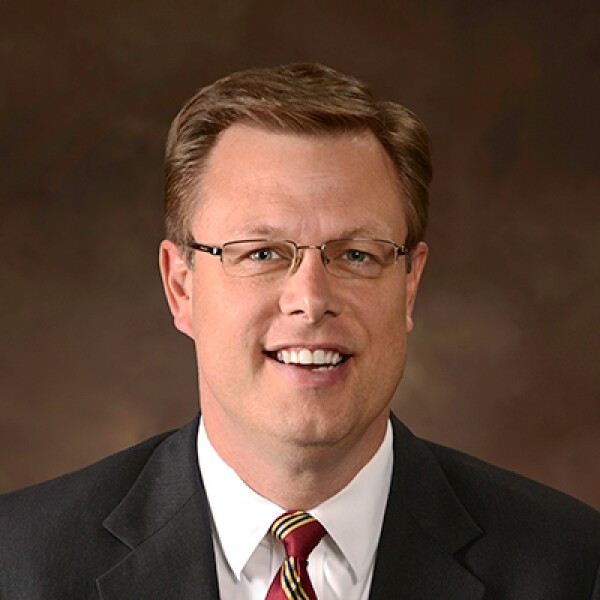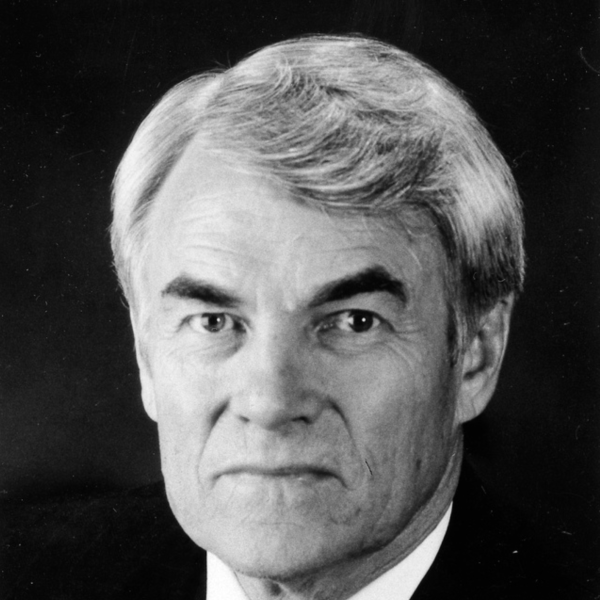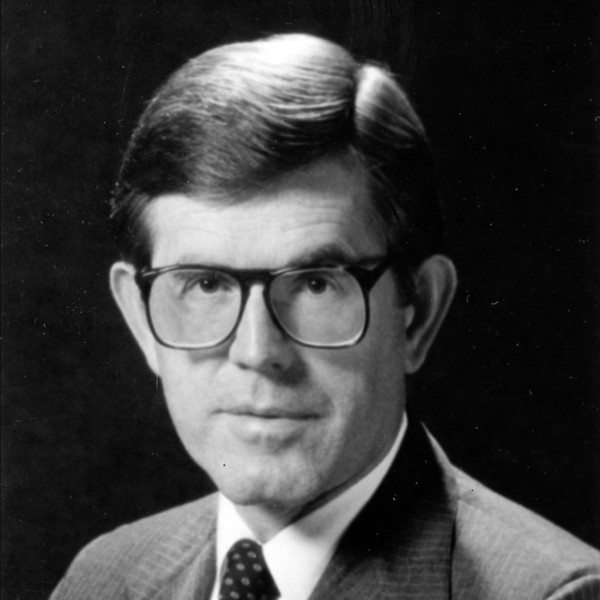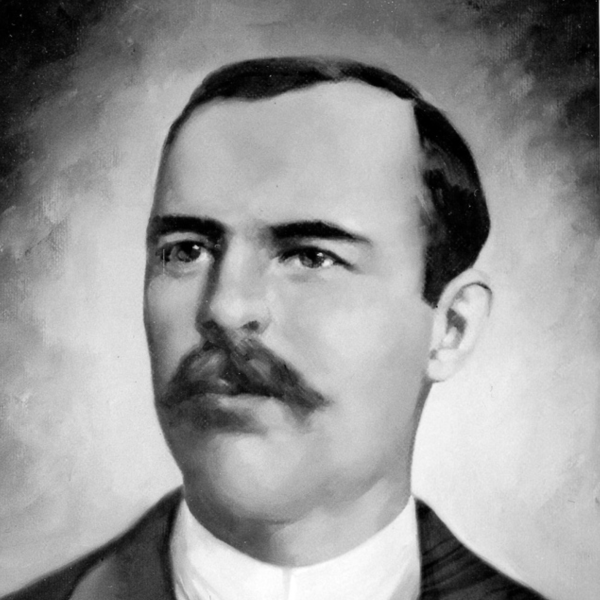Henry J. Eyring
2017-2023
Henry Johnson Eyring became the 17th president of Brigham Young University-Idaho in April 2017.
President Eyring and his family have had a long association with Rexburg and BYU-Idaho. He first came to this college town as a child in 1971 when his father, Henry B. Eyring, served as president of Ricks College, now known as BYU-Idaho.
President Henry J. Eyring returned to Rexburg and the relatively new BYU-Idaho in 2006. Over the ensuing 11 years at the university, he has served as associate academic vice president over Online Learning, advancement vice president, and academic vice president.
Prior to his work at BYU-Idaho, President Eyring worked as a strategy consultant at Monitor Company in Cambridge, Massachusetts, and as MBA director at Brigham Young University in Provo, Utah.
President Eyring earned a bachelor’s degree in geology, a master’s degree in business administration, and a juris doctorate from BYU. While attending BYU, he married his high school sweetheart, Kelly Ann Child. They are the parents of five children.
Henry Johnson Eyring became the 17th president of Brigham Young University-Idaho in April 2017.
President Eyring and his family have had a long association with Rexburg and BYU-Idaho. He first came to this college town as a child in 1971 when his father, Henry B. Eyring, served as president of Ricks College, now known as BYU-Idaho.
President Henry J. Eyring returned to Rexburg and the relatively new BYU-Idaho in 2006. Over the ensuing 11 years at the university, he has served as associate academic vice president over Online Learning, advancement vice president, and academic vice president.
Prior to his work at BYU-Idaho, President Eyring worked as a strategy consultant at Monitor Company in Cambridge, Massachusetts, and as MBA director at Brigham Young University in Provo, Utah.
President Eyring earned a bachelor’s degree in geology, a master’s degree in business administration, and a juris doctorate from BYU. While attending BYU, he married his high school sweetheart, Kelly Ann Child. They are the parents of five children.
Clark G. Gilbert
2015-2017
Clark G. Gilbert became the 16th president of Brigham Young University-Idaho in April 2015.
President Gilbert brought a range of academic and professional experiences to his assignment in Rexburg. Most recently, President Gilbert served as the CEO of Deseret News Publishing Company and Deseret Digital Media. He served previously as an associate academic vice president at BYU-Idaho, overseeing online learning and the Pathway program. A deeply committed teacher, President Gilbert had administrative responsibility for the Learning Model at BYU-Idaho. Prior to coming to Rexburg, he was a professor of entrepreneurial management at the Harvard Business School, where he taught and studied in the field of organizational innovation.
President Gilbert graduated from Brigham Young University with a bachelor's degree in International Relations. He earned a master's degree in East Asian Studies from Stanford University and a doctoral degree in Business Administration from the Harvard Business School.
President Gilbert was born in California and raised in Arizona. After serving as a missionary for The Church of Jesus Christ of Latter-day Saints in Japan, he married his wife, Christine. They are the parents of eight children.
Clark G. Gilbert became the 16th president of Brigham Young University-Idaho in April 2015.
President Gilbert brought a range of academic and professional experiences to his assignment in Rexburg. Most recently, President Gilbert served as the CEO of Deseret News Publishing Company and Deseret Digital Media. He served previously as an associate academic vice president at BYU-Idaho, overseeing online learning and the Pathway program. A deeply committed teacher, President Gilbert had administrative responsibility for the Learning Model at BYU-Idaho. Prior to coming to Rexburg, he was a professor of entrepreneurial management at the Harvard Business School, where he taught and studied in the field of organizational innovation.
President Gilbert graduated from Brigham Young University with a bachelor's degree in International Relations. He earned a master's degree in East Asian Studies from Stanford University and a doctoral degree in Business Administration from the Harvard Business School.
President Gilbert was born in California and raised in Arizona. After serving as a missionary for The Church of Jesus Christ of Latter-day Saints in Japan, he married his wife, Christine. They are the parents of eight children.
Kim B. Clark
2005-2015
Kim B. Clark became the 15th president of Brigham Young University-Idaho in August 2005. From April 2007 through April 2014, he served as a member of the Fifth Quorum of the Seventy of The Church of Jesus Christ of Latter-day Saints.
President Clark was born in Salt Lake City, Utah, and raised in Spokane, Washington. After serving as a missionary for the Church in Germany, he married his wife, Sue, in 1971. President Clark earned bachelor's, master's, and doctorate degrees in economics from Harvard University
In 1978 President Clark became a member of the faculty at the Harvard Business School and was named the dean of the school in 1995. He served in that capacity until he became president of BYU-Idaho in 2005.
Elder Clark was sustained as a member of the First Quorum of the Seventy of The Church of Jesus Christ of Latter-day Saints on April 4, 2015. He left his position at BYU-Idaho effective April 10, 2015.
President Clark and his wife, Sue, are the parents of 7 children.
Kim B. Clark became the 15th president of Brigham Young University-Idaho in August 2005. From April 2007 through April 2014, he served as a member of the Fifth Quorum of the Seventy of The Church of Jesus Christ of Latter-day Saints.
President Clark was born in Salt Lake City, Utah, and raised in Spokane, Washington. After serving as a missionary for the Church in Germany, he married his wife, Sue, in 1971. President Clark earned bachelor's, master's, and doctorate degrees in economics from Harvard University
In 1978 President Clark became a member of the faculty at the Harvard Business School and was named the dean of the school in 1995. He served in that capacity until he became president of BYU-Idaho in 2005.
Elder Clark was sustained as a member of the First Quorum of the Seventy of The Church of Jesus Christ of Latter-day Saints on April 4, 2015. He left his position at BYU-Idaho effective April 10, 2015.
President Clark and his wife, Sue, are the parents of 7 children.
David A. Bednar
1997- 2004
David A. Bednar began serving as president of Ricks College July 1, 1997. At that time, Ricks College was the largest private junior college in the United States with an enrollment of 8,500 full-time students. He guided the major transition to a four-year university as the school became Brigham Young University–Idaho
Elder Bednar was sustained as a member of the Quorum of the Twelve Apostles of The Church of Jesus Christ of Latter-day Saints on October 2, 2004. He subsequently left his position at BYU–Idaho effective December 1, 2004.
Elder Bednar and his wife, the former Susan K. Robinson, are the parents of three sons.
David A. Bednar began serving as president of Ricks College July 1, 1997. At that time, Ricks College was the largest private junior college in the United States with an enrollment of 8,500 full-time students. He guided the major transition to a four-year university as the school became Brigham Young University–Idaho
Elder Bednar was sustained as a member of the Quorum of the Twelve Apostles of The Church of Jesus Christ of Latter-day Saints on October 2, 2004. He subsequently left his position at BYU–Idaho effective December 1, 2004.
Elder Bednar and his wife, the former Susan K. Robinson, are the parents of three sons.
Steven D. Bennion
1989-1997
Steven D. Bennion served as president of Ricks College from 1989 to 1997. He had previously served as president of Snow College in Ephraim, Utah, for nearly seven years.
During his tenure at Ricks, President Bennion prepared the college for the future as computer access for students was expanded. The “fast track” program was developed to allow more students to attend. As a result of that program, student enrollment increased to 8,250 students. The John Taylor Building was constructed, the first new building on campus in 17 years.
In 1997, President Bennion became the president of Southern Utah University in Cedar City, Utah, and retired in 2006 to serve as president of the New York New York City South Mission. He and his wife, the former Marjorie Hopkins, are the parents of five children, four of whom are living.
Steven D. Bennion served as president of Ricks College from 1989 to 1997. He had previously served as president of Snow College in Ephraim, Utah, for nearly seven years.
During his tenure at Ricks, President Bennion prepared the college for the future as computer access for students was expanded. The “fast track” program was developed to allow more students to attend. As a result of that program, student enrollment increased to 8,250 students. The John Taylor Building was constructed, the first new building on campus in 17 years.
In 1997, President Bennion became the president of Southern Utah University in Cedar City, Utah, and retired in 2006 to serve as president of the New York New York City South Mission. He and his wife, the former Marjorie Hopkins, are the parents of five children, four of whom are living.
Joe J. Christensen
1985-1989
During President Joe J. Christensen's tenure between 1985 and 1989, the college reached its enrollment limit — 7,500 students at the time. President Christensen encouraged spiritual development and high moral values.
Throughout the year 1988, as the school celebrated its centennial, President Christensen reminded all those involved with Ricks College that, despite the many great institutional and spiritual accomplishments of the previous century, there remained "summits yet to climb." He urged students and faculty — both as individuals and as part of the university — never to stop striving for excellence beyond the present achievements.
During President Joe J. Christensen's tenure between 1985 and 1989, the college reached its enrollment limit — 7,500 students at the time. President Christensen encouraged spiritual development and high moral values.
Throughout the year 1988, as the school celebrated its centennial, President Christensen reminded all those involved with Ricks College that, despite the many great institutional and spiritual accomplishments of the previous century, there remained "summits yet to climb." He urged students and faculty — both as individuals and as part of the university — never to stop striving for excellence beyond the present achievements.
Bruce C. Hafen
1978-1985
Under the leadership of President Bruce C. Hafen, which spanned from 1978 to 1985, Ricks added the Eliza R. Snow Center for the Performing Arts; the Livestock Center; Outdoor Learning Center; Viking Stadium; and Idaho's first classical music station, KRIC-FM.
He said once, "May we never forget those tender moments of spiritual power and insight that tell us why we have such a college in the Church and what we learn when we come here."
Under the leadership of President Bruce C. Hafen, which spanned from 1978 to 1985, Ricks added the Eliza R. Snow Center for the Performing Arts; the Livestock Center; Outdoor Learning Center; Viking Stadium; and Idaho's first classical music station, KRIC-FM.
He said once, "May we never forget those tender moments of spiritual power and insight that tell us why we have such a college in the Church and what we learn when we come here."
Henry B. Eyring
1971-1977
Henry B. Eyring became the president of Ricks College in 1971 and served until 1977. His administration added more buildings, developed new technical and vocational programs, and refined the administrative structure. He also opened the college to those left homeless by the Teton Dam Flood.
President Eyring was asked by the Board of Trustees to serve as the Commissioner of Education for The Church of Jesus Christ of Latter-day Saints. Subsequently, Dr. Harry Maxwell, the dean of academic affairs, was appointed acting president for eight months during a nationwide search for a successor.
Henry B. Eyring became the president of Ricks College in 1971 and served until 1977. His administration added more buildings, developed new technical and vocational programs, and refined the administrative structure. He also opened the college to those left homeless by the Teton Dam Flood.
President Eyring was asked by the Board of Trustees to serve as the Commissioner of Education for The Church of Jesus Christ of Latter-day Saints. Subsequently, Dr. Harry Maxwell, the dean of academic affairs, was appointed acting president for eight months during a nationwide search for a successor.
John L. Clarke
1944-1971
President John L. Clarke's administration began in 1944 and was one of pioneering and growth. New hope materialized when enrollment increased from a few hundred to several thousand students in the 1960s.
Under the direction of President Clarke, facilities grew from two major buildings to about 18. In 1948 and 1949 third- and fourth-year college work was added to the Ricks College curriculum and baccalaureate degrees were offered. But in 1956 the third- and fourth-year programs were discontinued. In 1971 his 27-year-long administration ended.
President Clarke loved the young people. He once stated, "Ricks was founded upon the firm belief there are extraordinary possibilities in ordinary people."
President John L. Clarke's administration began in 1944 and was one of pioneering and growth. New hope materialized when enrollment increased from a few hundred to several thousand students in the 1960s.
Under the direction of President Clarke, facilities grew from two major buildings to about 18. In 1948 and 1949 third- and fourth-year college work was added to the Ricks College curriculum and baccalaureate degrees were offered. But in 1956 the third- and fourth-year programs were discontinued. In 1971 his 27-year-long administration ended.
President Clarke loved the young people. He once stated, "Ricks was founded upon the firm belief there are extraordinary possibilities in ordinary people."
Hyrum Manwaring
1930-1944
President Hyrum Manwaring took over in 1930 during the Great Depression. The preceding decade had been one of uncertainty, and it continued that way during President Manwaring's administration, which lasted until 1944. Most schools owned by the Church were given to their respective states to administer, but the State of Idaho would not accept Ricks College. For ten years the college was in serious danger of closing. However, through the sacrifices of administration, faculty, and faithful Church members, the school remained open and became accredited.
President Hyrum Manwaring took over in 1930 during the Great Depression. The preceding decade had been one of uncertainty, and it continued that way during President Manwaring's administration, which lasted until 1944. Most schools owned by the Church were given to their respective states to administer, but the State of Idaho would not accept Ricks College. For ten years the college was in serious danger of closing. However, through the sacrifices of administration, faculty, and faithful Church members, the school remained open and became accredited.
George S. Romney
1917-1930
The administration of George S. Romney began in 1917 and was a season of development as high school courses were entirely phased out and the college curriculum was expanded.
In 1918 the General Board of Education changed the name of the school to Ricks Normal College, and the title of principal was changed to that of president.
President Romney's tenure ended in 1930.
The administration of George S. Romney began in 1917 and was a season of development as high school courses were entirely phased out and the college curriculum was expanded.
In 1918 the General Board of Education changed the name of the school to Ricks Normal College, and the title of principal was changed to that of president.
President Romney's tenure ended in 1930.
Andrew B. Christenson
1914-1917
Andrew B. Christenson became principal in 1914. The next year, the academy made the transition to higher education under his direction. He oversaw the laying of the cornerstone for a new gymnasium building that stood for many years near the site where the Eliza R. Snow Center for the Performing Arts currently stands. In 1917 the academy received state certification so that its graduates could teach in Idaho. The same year, Principal Christenson was replaced by George S. Romney.
Andrew B. Christenson became principal in 1914. The next year, the academy made the transition to higher education under his direction. He oversaw the laying of the cornerstone for a new gymnasium building that stood for many years near the site where the Eliza R. Snow Center for the Performing Arts currently stands. In 1917 the academy received state certification so that its graduates could teach in Idaho. The same year, Principal Christenson was replaced by George S. Romney.
Ezra C. Dalby
1901-1914
Ezra Christiansen (who changed his last name to Dalby in 1907) served as principal from 1901 to 1914. In 1903 he saw the opening of the first building on campus (located on the site of the reminiscent Spori Building).
Writing in the local newspaper, he once stated of the school, "It will shine as a beacon of light to the ends of the earth, and add to the beauty and glory of Zion through all the coming years."
Ezra Christiansen (who changed his last name to Dalby in 1907) served as principal from 1901 to 1914. In 1903 he saw the opening of the first building on campus (located on the site of the reminiscent Spori Building).
Writing in the local newspaper, he once stated of the school, "It will shine as a beacon of light to the ends of the earth, and add to the beauty and glory of Zion through all the coming years."
Douglas M. Todd
1899-1901
Douglas M. Todd was called as principal in 1899 and served in that position until 1901. During that time he built the academy into a high school. Elementary students could attend local grade schools, but no high school existed in Rexburg at the time.
Principal Todd once said, "This school will yet grow and surprise the world with its great men and women, because it was conceived in righteousness and dedicated to the service of God."
Douglas M. Todd was called as principal in 1899 and served in that position until 1901. During that time he built the academy into a high school. Elementary students could attend local grade schools, but no high school existed in Rexburg at the time.
Principal Todd once said, "This school will yet grow and surprise the world with its great men and women, because it was conceived in righteousness and dedicated to the service of God."
George Cole
1894-1899
George Cole was called to serve as principal of Bannock Academy in 1894. The Academy was still struggling financially and was constantly at risk of having to be closed. One year, Principal Cole and the other four teachers at the school taught the last half of the term without pay, accepting homegrown produce from students as tuition so they could still have food to feed their families.
Even under those circumstances, seventh and eighth grade programs were implemented in the school under Cole's tenure. He served as principal and teacher until 1899.
George Cole was called to serve as principal of Bannock Academy in 1894. The Academy was still struggling financially and was constantly at risk of having to be closed. One year, Principal Cole and the other four teachers at the school taught the last half of the term without pay, accepting homegrown produce from students as tuition so they could still have food to feed their families.
Even under those circumstances, seventh and eighth grade programs were implemented in the school under Cole's tenure. He served as principal and teacher until 1899.
Charles N. Watkins
1891-1894
As the second principal of Bannock Academy, Charles Nephi Watkins strove to uphold the standards set by Jacob Spori, and to continue to build the school. He was called to the position in 1891, when the Academy was still relatively new and struggling financially. Local Church members were asked to make financial contributions to help keep the school in operation. Since there was only one other teacher in the Academy at the time, Principal Watkins was involved in teaching full-time in addition to his administrative role.
Watkins continued to teach at the Academy until 1896, even though health reasons had caused him to resign from his position as principal in 1894.
As the second principal of Bannock Academy, Charles Nephi Watkins strove to uphold the standards set by Jacob Spori, and to continue to build the school. He was called to the position in 1891, when the Academy was still relatively new and struggling financially. Local Church members were asked to make financial contributions to help keep the school in operation. Since there was only one other teacher in the Academy at the time, Principal Watkins was involved in teaching full-time in addition to his administrative role.
Watkins continued to teach at the Academy until 1896, even though health reasons had caused him to resign from his position as principal in 1894.
Jacob Spori
1888-1891
Jacob Spori, a highly educated Swiss immigrant, was appointed to be the first principal of Bannock Stake Academy in 1888. The academy struggled to survive during its early years.
A vivid example of sacrifice is portrayed by the selflessness of Principal Spori. One year, when the academy was strapped for money, he applied his salary toward the debt of the school. He also worked on the railroad for a time, using some of his earnings to help pay the salaries of other teachers.
Principal Spori is often attributed as having said, "The seeds we're planting today will grow and become mighty oaks, and their branches will run all over the earth."
Principal Spori served until 1891.
Jacob Spori, a highly educated Swiss immigrant, was appointed to be the first principal of Bannock Stake Academy in 1888. The academy struggled to survive during its early years.
A vivid example of sacrifice is portrayed by the selflessness of Principal Spori. One year, when the academy was strapped for money, he applied his salary toward the debt of the school. He also worked on the railroad for a time, using some of his earnings to help pay the salaries of other teachers.
Principal Spori is often attributed as having said, "The seeds we're planting today will grow and become mighty oaks, and their branches will run all over the earth."
Principal Spori served until 1891.
















